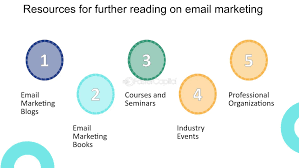Email marketing has been around for a few decades, but it’s still one of the most powerful marketing tools for startups. According to Statista, the number of email users worldwide is expected to reach 4.48 billion by 2024. This means that you have a massive opportunity to reach and convert your target audience through email marketing. However, it’s essential to have a solid strategy for your email campaigns to get the results you desire. In this article, we’ll discuss strategies that can help your startup to effectively reach and convert your target audience.
1. Define your target audience
The first step to effective email marketing is to define your target audience. Who do you want to reach with your messages? Be specific about your target audience’s demographics, interests, and challenges they face. This information will help you personalize your messages and make them more relevant to your audience, increasing their chances of opening and engaging with your emails.
2. Build a quality email list
Your email list is the backbone of your email marketing efforts. Building a quality list of subscribers takes time and effort, but it’s worth it. Start by offering valuable content and incentives in exchange for email addresses. Also, make it easy for visitors to your website and social media channels to sign up for your email list.
3. Craft compelling subject lines
Your subject line is the first thing your subscribers see when they receive your emails. It’s crucial to craft compelling subject lines that grab their attention and make them curious about what’s inside your email. Use action-oriented language, personalization, and urgency to increase the chances of your emails getting opened.
4. Personalize your emails
Personalization is key to making your emails more relevant to your subscribers. Use their first names, segment your email list based on interests, and tailor your messages accordingly. Personalized emails have higher open and click-through rates than generic emails.
5. Provide value in your emails
Your subscribers are busy people, and they won’t waste their time on irrelevant or spammy emails. Provide value in every email you send, whether it’s educational content, exclusive offers, or useful tips. Your subscribers will appreciate your efforts, and they will be more likely to engage with your emails.
6. Optimize your emails for mobile devices
More and more people are accessing their emails from mobile devices. Make sure your emails are optimized for mobile devices, so they look good and are easy to read on small screens. Use responsive design, short paragraphs, and clear calls-to-action to increase the chances of engagement.
7. Test and analyze your email campaigns
Testing and analyzing your email campaigns is essential to improve their effectiveness over time. Use A/B testing to try out different subject lines, layouts, or calls-to-action. Also, track your open rates, click-through rates, and other metrics to see what’s working and what’s not. Use this data to tweak your campaigns and improve your results.
Conclusion
Email marketing is a powerful way for startups to reach and convert their target audience. By following these strategies, you can create effective email campaigns that engage your subscribers and drive results. Remember to personalize your messages, provide value, and optimize for mobile devices. Also, be sure to test and analyze your campaigns to improve their performance continually.
FAQs
Personalization makes your emails more relevant to your subscribers, increasing their chances of engagement. Personalized emails have higher open and click-through rates than generic emails.
Offer valuable content and incentives in exchange for email addresses. Also, make it easy for visitors to your website and social media channels to sign up for your email list.
More and more people are accessing their emails from mobile devices. Optimizing your emails for mobile devices makes them look good and are easy to read on small screens, increasing the chances of engagement.
Track your open rates, click-through rates, and other metrics to see what’s working and what’s not. Use this data to tweak your campaigns and improve your results.
The frequency of your email campaigns depends on your audience and the type of content you’re sending. Test different frequencies and analyze the results to find the sweet spot for your audience.


